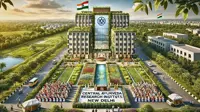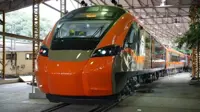At the crossroads of retailing
By Mohini Bhatnagar | 09 Jan 2002
 Organised retailing first came to the South and is now spreading all over India by the entry of a number of companies notably, the Tatas with Trent, the Piramals with Crossroads the Rajan Raheja group with Globus, the Goenkas with Foodworld and so on.
Organised retailing first came to the South and is now spreading all over India by the entry of a number of companies notably, the Tatas with Trent, the Piramals with Crossroads the Rajan Raheja group with Globus, the Goenkas with Foodworld and so on.Prior to the formal launch of the Piramals-owned Crossroads, Mumbais first shopping multiplex, Piramal Holdings chairman Ajay Piramal at a press meet said at Crossroads "there would be something for everyone."
The implication clearly was that most people could do some shopping at the mall. As things later turned out, maybe he meant window-shopping! For, that is all most would-be shoppers could do when Crossroads opened to the public.
At that time, the mall was abounding with exclusive names like Shyam Ahuja, Ritu Beri, Rohit Bal and Swarovski of course, at an astronomical price. Two years down the line, exclusivity at Crossroads is being replaced by affordability. Now pedestrian consumer durables shops selling Whirlpool refrigerators and Videocon televisions rub shoulders with Swarovskis outlets. And the evolution is still on.
The Trents and the Crossroads soon proved with their high prices that, they were not for everyone and only the well-heeled could afford to shop there. Subsequently, when the climbdown started it became clear that this is not the way it should be.
Retail industry experts say that in 2001, retailing entered a new phase in India. Established retailers are now experimenting with new formats in infrastructure, pricing and customer-care. The biggest change in 2001, therefore, was on the price front.
Subhiksa in Chennai, Margin Free in Kerala, Bombay Bazaar in Mumbai, RPGs Giant in Hyderabad, Big Bazaar in Kolkata, Hyderabad and Bangalore have one thing in common they all price their products below MRP. Discount stores are slowly arriving in India and industry insiders feel they will spearhead a revolution in organised retailing.
Says Big Bazaar MD Kishore Biyani: "On the list of top retailers in the world quite a few are discounters. Around 60 per cent of the business abroad comes from this format. Incidentally, the largest retailer in the world, Wal-Mart, is a discount store."
Perhaps no other format typifies the change so much as the hypermarkets. A hypermarket is somewhat of a big discount store that, ideally, stocks 60 per cent food and 40 per cent non-food items.
Hypermarkets are designed to generate higher revenues and delivery gains in terms of branding, merchandising, display, variety and choice for partners, consumers, retailers and the government alike. Owing to the huge volume of sales generated at hypermarkets, overheads stay low and they are able to function like discount stores.
Some call them the Godzillas of retailing, as they are several times bigger in scope and scale than department stores. They are usually located at the edge-of-the-town, and have an extremely complex supply chain.
So far, most national-level retailers have stayed away from the hypermarket format largely because of the complexity of managing the supply chain and even a discount store like the 70-store chain Subhiksha has stuck to food and provisions and restricted itself to Tamil Nadu.
Globally, hypermarkets account for 60 per cent of the retail sales. However, a few established retailers are setting up hypermarkets in India. For instance, the Rs 6,000-crore RPG group of Food World, Health and Glow and Music World fame opened its hypermarket by the name of Giant early this year in Hyderabad.
Say company officials: "The response has been fantastic, and we are growing month-on-month." The 50,000-sq ft hypermarket is co-owned by Dairy Farm, a leading pan-Asian food and drugstore retailer based in Hong Kong. RPG and Dairy Farm plan to launch eight to 10 such stores in three years in cities like Pune, Bangalore and Chennai.
Dairy Farms core strategy is to focus on supermarket, hypermarket, convenience and drugstore operations, offering consumers value for money through low-cost, efficient distribution of high-quality fresh foods and fast-moving consumer goods.
Another such hypermarket is Big Bazaar, set up in Hyderabad, Kolkata and Bangalore by the Pantaloon group. It stocks close to 1.5 lakh items across 18 product categories and relies on aggressive pricing to pull in customers as well as bludgeon competition.
Says Biyani: "We are doing better than expected we get around 22,000 clients each day with daily sales of Rs 25-30 lakh from all the three stores." Big Bazaar invested a total of Rs 30 crore to have a discount store each in the three centres.
Biyani says Big Bazaar will open a store in Gurgaon by early 2002 and three stores in Mumbai, beginning March 2002. The total investment will be Rs 25-30 crore and the turnover expected from each store is around Rs 50 crore. RPG plans to have 15 Giant stores in the next five years, entailing a total investment of Rs 225 crore.
While southern and western India have seen a range of hypermarkets such as the RPG groups Giant in Hyderabad, Pantaloon Retails Big Bazaar among others, the north particularly Delhi has been devoid of such stores.
Consumers here rely on a network of local mom-and-pop stores for daily shopping. These increasingly offer the convenience of tele-shopping as well. In a recent development, two New Delhi-based retail chains and Ansal Housing and Construction decided to jointly set up six hypermarkets in New Delhi.
The retail chains include Home Store (India), a retailer of home products and accessories, and Lifespring, owner of a chain of health and beauty product stores in Delhi. The three will invest more than Rs 50 crore to set up six hypermarkets across Delhi by year 2003. To be called Metro Sabka Bazar (Everybodys Market), each store will be spread over 50,000 sq ft.
According to Arif Sheikh, managing director The Home Store, (THS), The Home Store plans to follow a business plan where it will buy out the real estate for all the proposed hypermarkets and will later rent out a major portion and also take a cut in margins. THS has the retailing expertise and will need to sell at competitive prices to keep out expenses and overheads low.
The company estimates that each hypermarket will involve an investment of Rs 50 crore. The reason for THSs diversification clearly is to expand its customer base, which is currently limited to a niche audience. The Home Store already operates 17 outlets in 10 Indian cities, although none of the stores are hypermarkets.
New retail brand that entered India in year 2001 was the 8-billion Marks and Spencer (M&S) that opened outlets in Mumbai and Delhi. M&S, known for its discounted pricing in countries like the UK, has ventured into India through the franchisee route in a tie-up with Planet Sport. Unlike in other countries M&S is going in for fancy pricing and may find the going tough, say retail industry experts.
Hypermarkets, thus, are clearly a volumes game and in India, with its value-for-money conscious public, if managed well they could change the retail scene for good.


.webp)
































